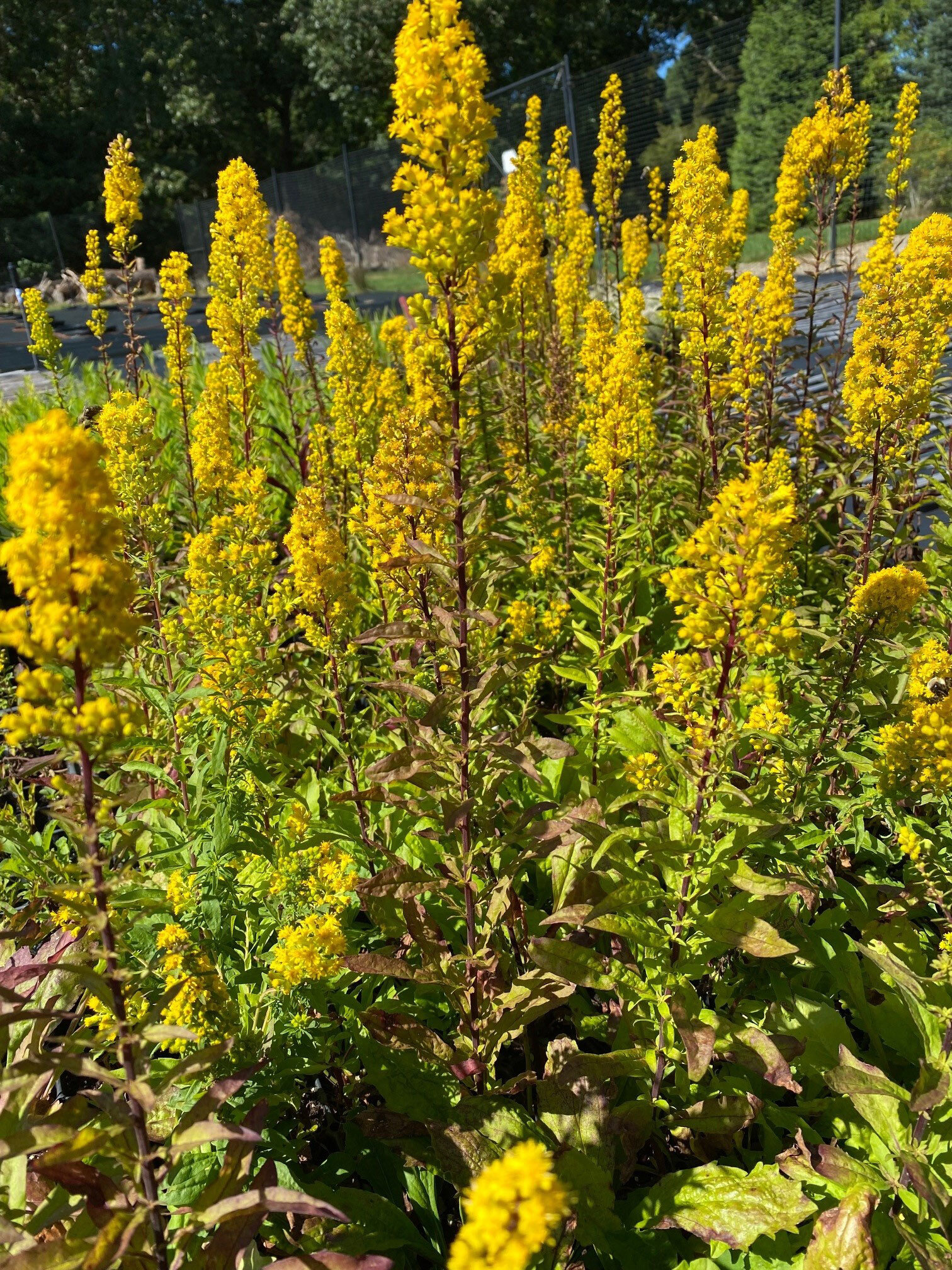Great Goldenrods
In the Garden with Andrew
Solidago rugosa ‘Fireworks’. Photo: Andrew Bunting
Andrew Bunting. Photo courtesy of the Pennsylvania Horticultural Society.
Goldenrods, which many had long seen as merely a roadside weed, have in recent years become very popular plantings: they are great, stalwart perennials; they are durable and resilient, attract myriad pollinators, are relatively deer-resistant, and provide golden flowers throughout late summer and into the fall.
Solidago sempervirens. Photo: Andrew Bunting
When I was in Martha’s Vineyard recently, I saw Solidago sempervirens growing in the dunes. This seaside goldenrod is found in coastal habitats from Newfoundland to Texas, and can withstand sustained wet conditions, as well as exposure to salt. It grows to between three and six feet tall, depending on the fertility of the soil, flowers in mid- to late September—displaying terminal clusters of golden yellow flowers—and is a food source for migrating monarch butterflies.
The zig-zag goldenrod, Solidago flexicaulis, is native to woodlands in myriad eastern North American habitats. It is clump-forming, reaches three feet tall, and is covered with yellow flowers from late summer into the fall. It is typically grown in combination with fall-blooming asters such as ‘Raydon’s Favorite’ or ‘October Skies’, or with the threadleaf bluestar, Amsonia hubrictii, or with ornamental grasses—for example, prairie dropseed, Sporobolus heterolepis. Its nectar feeds bees, wasps, flies, and butterflies, and its seed heads are a good food source for a variety of songbirds. Even though it is native to woodlands, it thrives and flowers best in full sun.
Another native of the woodlands is Solidago caesia, commonly called wreath goldenrod or bluestem goldenrod. It is small statured and has arching stems with tiny yellow flowers in the axils of the leaves. It is perfect for smaller gardens, and can be combined with similar-sized native plants, such as Heuchera villosa or Eurybia divaricata (also called Aster divaricatus).
Solidago puberula. Photo: Andrew Bunting
For a profusion of flowers in late summer, I love Solidago puberula, the downy goldenrod, which grows in sandy soils in the northeastern United States. It tolerates extreme drought as well as some salt; it is upright and reaches three feet tall, and its top half is covered with tiny yellow-orange flowers.
Another goldenrod species, Solidago shortii ‘Solar Cascade’, was introduced by the Cincinnati Zoo Botanic Garden as part of their Native Endangered Plant Program. It is medium-sized and clump forming, and produces many arching, flower-covered stems. It creates a great textural effect in the garden because its stems move so gracefully in the breeze. Researchers at Middle Tennessee State University found that its relatively small leaves and large roots allow it to prosper in drought conditions. Also worth mentioning is Short’s goldenrod, which grows wild in only three northern Kentucky counties. In the garden, it can be grown effectively in masses, which allows you to fully appreciate its many arching stems.
One of my favorite goldenrods, Solidago rugosa ‘Fireworks’, has, unlike these other species, been in cultivation for years—it is a cultivar of the wrinkleleaf goldenrod. It features sprays of flowers that look like golden fireworks; they bloom in late summer and into the fall, and the flowers cascade from the top of the plant, creating an airy effect. It has been recognized as an exceptional cultivar: it was selected at the North Carolina Botanical Garden and was one of the top-ranked selections at the Chicago Botanic Garden’s Solidago trial. It is great for public areas, urban plantings, and similar locations, because it is very durable and can withstand a multitude of different soil conditions.
In general, all goldenrod species grow best in full sun and most are very tolerant of a wide range of soil-moisture levels and types. Once goldenrods have expanded, they can be divided in the spring and planted in other spots in your garden or shared with your friends. All Solidagos are excellent pollinators—visited by bees, wasps, butterflies, and moths—and in the fall, when their seeds are set, they are an important food source for sparrows and other songbirds. In the fall garden they combine beautifully with many different kinds of fall-blooming asters, native grasses, or toad lilies (Tricyrtis), and they also work well with native shrubs like sumacs (Rhus), Virginia sweetspire (Itea), or summersweet (Clethra).
Send your gardening questions to editor@swarthmorean.com. Put “Garden” in the subject line.
Andrew Bunting is vice president of public horticulture at the Pennsylvania Horticultural Society and vice president of the Swarthmore Horticultural Society.






